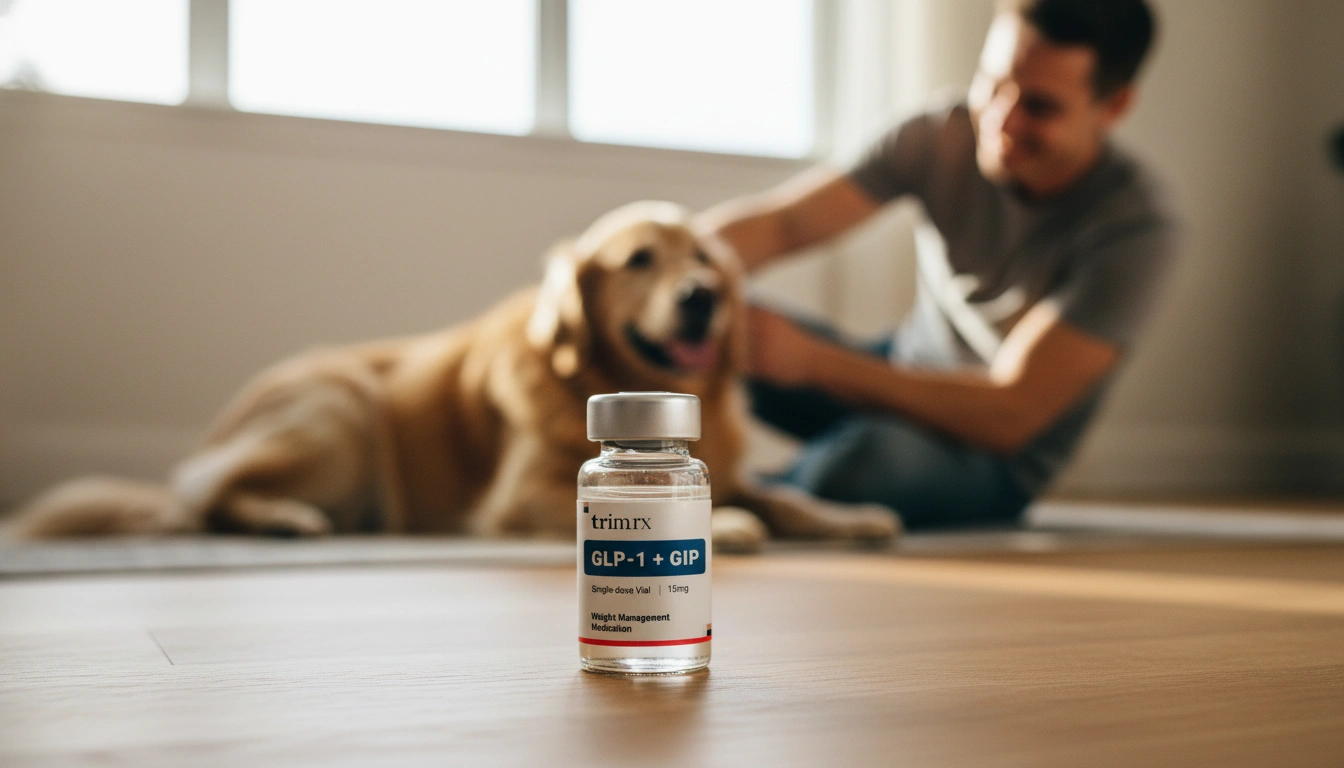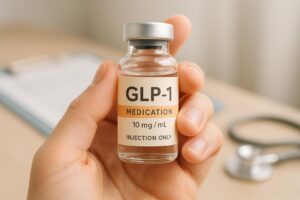How to Inject GLP-1 in Thigh: A Step-by-Step Guide

Introduction
Have you ever felt a mix of apprehension and excitement at the thought of self-injecting a medication? If so, you’re not alone. Many individuals beginning their journey with GLP-1 medications, like semaglutide, may feel the same way. With the increasing popularity of these medications for weight management and diabetes control, understanding how to administer them correctly is crucial for your health and well-being.
GLP-1, or glucagon-like peptide-1, medications are designed to mimic a hormone that plays a key role in regulating appetite and insulin secretion, making them valuable tools for those struggling with obesity or type 2 diabetes. However, as with any injectable medication, knowing how to inject it properly—especially in areas like the thigh—is essential for ensuring effectiveness and minimizing discomfort.
In this blog post, we will guide you through the process of injecting GLP-1 medications in the thigh, including the reasons for choosing this site, preparation steps, and best practices to follow. By the end, you’ll feel empowered and confident in your ability to manage your treatment effectively.
We’ll start by explaining the significance of GLP-1 medications, followed by detailed instructions on how to inject them properly into your thigh. Along the way, we’ll emphasize the importance of safety, proper technique, and the role of personalized care in your weight loss journey. Together, let’s explore how to embrace this innovative approach to weight management.
Understanding GLP-1 Medications
GLP-1 medications, such as semaglutide, are classified as GLP-1 receptor agonists. These drugs play a vital role in managing blood sugar levels and promoting weight loss. They work by mimicking the effects of the natural GLP-1 hormone produced in the intestines, which helps regulate appetite and insulin secretion.
The FDA has approved semaglutide for use under the brand names Ozempic, Wegovy, and others. Each of these medications is administered via subcutaneous injections, either in the abdomen, thigh, or upper arm. The choice of injection site can influence the absorption of the medication, thus affecting its overall effectiveness.
At TrimRx, we are committed to providing personalized, medically supervised weight loss solutions that empower individuals to achieve their health goals. Our approach merges cutting-edge telehealth innovations with compassionate care, ensuring our clients receive tailored support throughout their weight loss journey.
Why Choose the Thigh for Injection?
When it comes to injecting GLP-1 medications, the thigh is a popular choice for several reasons:
- Accessibility: The thigh offers a convenient and easily accessible injection site, particularly for self-administration.
- Fat Distribution: The thigh typically has ample subcutaneous fat, which is essential for effective drug absorption.
- Rotation: Rotating injection sites is crucial to prevent tissue damage and irritation. Using the thigh allows for easy rotation with other sites like the abdomen or upper arm.
Research indicates that while the absorption rate may vary slightly between injection sites, using the thigh still provides effective outcomes when administered correctly.
Supplies Needed for Injection
Before you begin, gather the following supplies to ensure a smooth and safe injection process:
- GLP-1 medication pen (e.g., semaglutide)
- New needle (if applicable)
- Alcohol swabs for sanitizing the injection site
- Sharps container for safe disposal of needles
- Cotton ball or gauze (optional, for post-injection care)
Step-by-Step Instructions for Injecting GLP-1 in the Thigh
Now that you have your supplies ready, let’s dive into the detailed steps for injecting GLP-1 medication into your thigh.
1. Prepare Your Supplies
- Wash Your Hands: Begin by thoroughly washing your hands with soap and water for at least 20 seconds to reduce the risk of infection.
- Gather Your Materials: Ensure that you have all required items within reach to avoid any interruptions during the injection process.
2. Choose and Prepare the Injection Site
- Select the Injection Site: Choose the outer thigh for your injection. Aim for the middle third of the thigh, around four inches above the knee and four inches below the hip. Avoid areas with visible veins, scars, or bruises.
- Clean the Area: Use an alcohol swab to clean the selected injection site. Allow it to air dry completely to minimize discomfort during the injection.
3. Prepare the Medication
- Check the Medication: Ensure that the medication in your pen is clear and free from particles. If it appears cloudy or discolored, do not use it.
- Attach a New Needle: If using a pen that requires a needle, attach a new needle securely. Remove both caps from the needle carefully.
4. Inject the Medication
- Pinch the Skin: With one hand, pinch a fold of skin at the injection site to lift it slightly away from the muscle.
- Insert the Needle: Hold the pen or syringe at a 90-degree angle to your skin. Swiftly insert the needle into the pinched skin.
- Inject the Medication: Press the dose button on the pen or push the plunger on the syringe to inject the medication. Hold it in place for a few seconds to ensure the full dose is delivered.
- Withdraw the Needle: Remove the needle smoothly and apply gentle pressure with a cotton ball or gauze to the injection site if necessary.
5. Dispose of the Needle Safely
- Dispose of the Needle: Place the used needle into a sharps container immediately to prevent injury and ensure safe disposal.
- Cap the Pen: If you’re using a pen, replace the cap on the pen securely.
6. Monitor the Injection Site
After administering the injection, monitor the site for any signs of irritation or allergic reactions. Common side effects may include slight redness, swelling, or discomfort at the injection site. If you experience severe reactions, consult your healthcare provider.
Best Practices for Injecting GLP-1
To ensure a successful injection every time, consider the following best practices:
- Rotate Injection Sites: Always rotate between different areas of the thigh and other approved sites to prevent tissue damage and irritation. This practice promotes better absorption of the medication.
- Keep a Log: Maintain a log of your injection sites to help track rotations and avoid using the same spot too frequently.
- Follow Healthcare Provider Recommendations: Always adhere to the instructions provided by your healthcare professional regarding dosage and administration.
The Importance of Personalized Support
At TrimRx, we understand that every individual’s journey is unique. We believe in empowering our clients with the knowledge and support necessary to navigate their weight loss journey successfully. If you’re considering GLP-1 medications like semaglutide, we encourage you to take our free assessment quiz to determine your eligibility for our personalized weight loss programs.
We offer comprehensive services that include doctor consultations, lab work, unlimited support, and shipping, all designed to help you achieve sustainable weight loss.
Take Our Free Assessment Quiz
Ready to explore personalized weight loss solutions? Take our free assessment quiz today to see if you qualify for our prescription weight loss medications: Take the Quiz.
Conclusion
Injecting GLP-1 medications like semaglutide in the thigh can be a straightforward process when performed correctly. By understanding the steps involved and adhering to best practices, you can manage your treatment with confidence and ease. Remember, the thigh is just one of several effective injection sites, and rotating your injection areas will help maximize the effectiveness of the medication while minimizing discomfort.
As you embark on your weight loss journey, remember that support is crucial. TrimRx is here to provide personalized care and guidance tailored to your unique needs. We invite you to take our free assessment quiz and learn more about how we can assist you on your path to a healthier lifestyle.
FAQ
What is GLP-1?
GLP-1 (glucagon-like peptide-1) is a hormone that helps regulate appetite and insulin secretion. Medications that mimic this hormone, like semaglutide, are used for weight management and diabetes control.
Why is proper injection technique important?
Proper injection technique is essential to ensure the medication is delivered effectively, minimize discomfort, and reduce the risk of complications such as irritation or infection.
Can I inject GLP-1 in other areas besides the thigh?
Yes, you can also inject GLP-1 medications in the abdomen or upper arm. However, it’s essential to rotate injection sites to prevent irritation and ensure effective absorption.
What should I do if I miss a dose of my GLP-1 medication?
If you miss a dose, take it as soon as you remember, but only if it’s within five days of the missed dose. If it has been more than five days, skip the missed dose and continue with your regular schedule. Always consult your healthcare provider for specific guidance.
Where can I get more information about personalized weight loss solutions?
To learn more about our personalized weight loss programs and see if you qualify for our GLP-1 medications, take our free assessment quiz here: Take the Quiz.
Your journey to a healthier lifestyle starts today!

Transforming Lives, One Step at a Time
Keep reading
Tracking Progress With GLP-1: What To Measure
Learn which metrics to track on GLP‑1 therapy—weight, waist, blood sugar, lipids, side effects, and non‑scale wins—and how often to monitor them.
Fatigue Solutions for Ozempic and Wegovy Users
Hydration, protein-rich meals, light activity, and better sleep can reduce medication-related fatigue and help maintain energy during weight-loss treatment.
GLP-1 Medication Side Effect Checker
Worried about GLP-1 medication side effects? Use our free checker for Semaglutide, Liraglutide, and more to learn what to expect and stay informed!



